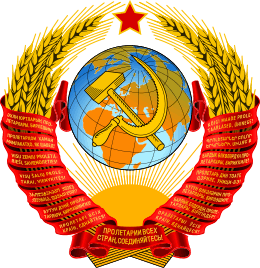Communist Academy
The Communist Academy (Russian: Коммунистическая академия, transliterated Kommunisticheskaya akademiya) was an educational establishment based in Moscow which was intended to allow Marxists to research problems independent of, and implicitly in rivalry with, the Academy of Sciences, which long pre-existed the October Revolution and the subsequent formation of the Soviet Union.[1]
The Socialist Academy
The Academy was originally called the Socialist Academy when it was founded on June 25, 1918.[2] The Academy acquired some success and influence in the 1920s, especially in the social sciences and law under the direction of Evgeny Pashukanis. The Academy included approximately 100 active members and a number of corresponding members. The goals of the CA were research in social sciences, history, theory and practice of socialism.
The Communist Academy
From April 17, 1924, it was renamed the Communist Academy. On November 26, 1926, the Central Executive Committee of the USSR (ЦИК СССР) confirmed the charter of the CA. In December 1929, a Leningrad branch was opened.
The Communist Academy included the following institutes: philosophy, history, literature, art and language, contemporary development and law, world economy and world politics, economics, agrarian studies, natural sciences, and a series of special commissions on specific topics. After reorganization in 1932, the Communist Academy's main focus shifted to socialist development and world economy.
However, the very independence that originally inspired the new Academy caused it to run afoul of Joseph Stalin, and he abolished it in 1936, an early manifestation of his rapidly developing purges.[1] According to a decree published on February 8, 1936, the Communist Academy was subsumed within the Soviet Academy of Sciences.
Journal
From 1922, the Academy published a bulletin ("Вестник Социалистической академии") and from 1924 ("Вестник Коммунистической академии") which lasted until September 1935. For many years, the Communist Academy was a leading center in the social sciences and played a leading role in the promulgation of Marxist-Leninist ideology.
The Academy's library was preserved as the Fundamental Library of the Social Sciences, which itself became an important part of the still-extant library of the Institute of Scientific Information of the Social Sciences.[1]
Notable people involved with the Communist Academy
See also
References
- Graham, Loren R. (1993), Science in Russia and the Soviet Union : a short history, Cambridge, UK: Cambridge University Press, p. 86, ISBN 0-521-28789-8
- Russian History Encyclopedia: Communist Academy, retrieved January 10, 2009
